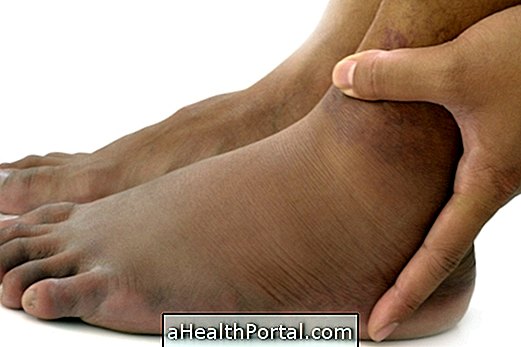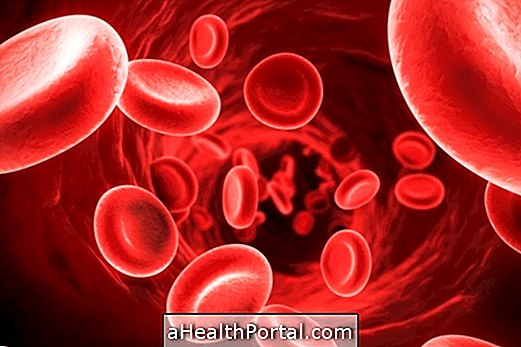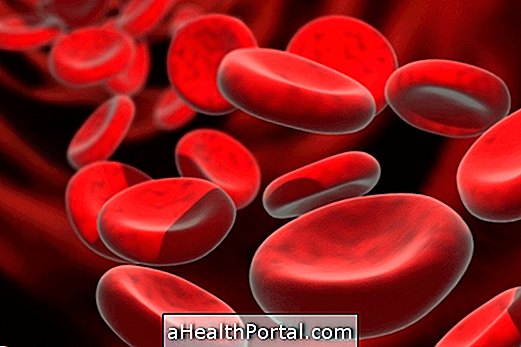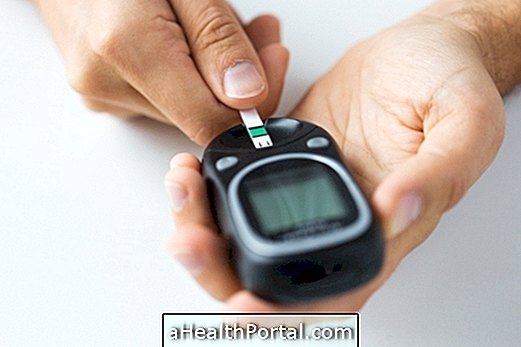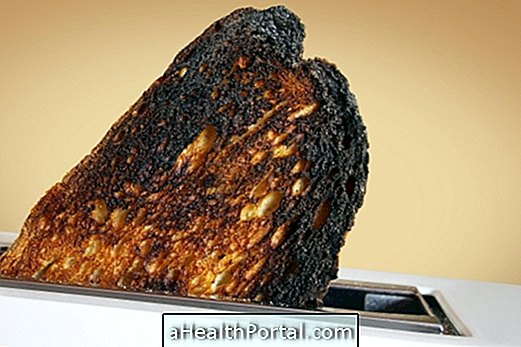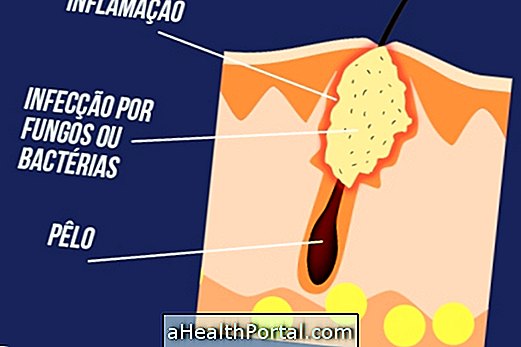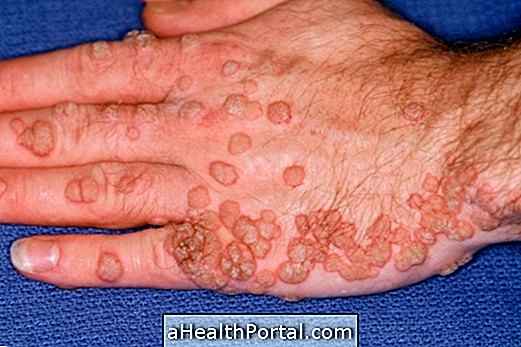Thrombocytopenia, or thrombocytopenia, is a decrease in the number of platelets in the blood, a condition that impairs coagulation, and can cause symptoms such as purple or red spots on the skin, bleeding gums or nose, and red urine, for example.
Platelets are essential components of blood for clotting, facilitating wound healing and preventing bleeding. However, there are several situations that can cause a decrease in the amount of platelets, such as infections, such as dengue, use of medicines such as heparin, immunity-related diseases such as thrombocytopenic purpura and even cancer.
The treatment of low platelets should be done according to their cause by the general practitioner or hematologist, and it may be necessary only the control of the cause, the use of medicines or, in very serious cases, the transfusion of platelets.
See other major platelet changes and what to do.
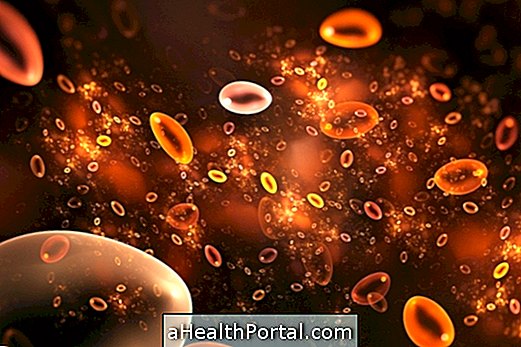
Main symptoms
Platelets are low when the blood count is less than 150, 000 cells / mm 3 of blood, and, most of the time, they do not cause symptoms. However, a person may have a greater tendency to bleed, and symptoms such as:
- Purple or red spots on the skin, such as bruising or bruising;
- Bleeding gums;
- Bleeding from nose;
- Urine with blood;
- Stool bleeding;
- Bulky menstruation;
- Wounds with bleeding that is difficult to control.
These symptoms may occur in anyone with low platelets but are most common when they are very low, such as below 50, 000 cells / mm 3 of blood, or when associated with another disease such as dengue or cirrhosis, which worsen the coagulation function of blood.
One of the diseases most commonly associated with platelet reduction is thrombocytopenic purpura. See what this disease is and how to treat it.
What can it be
Platelets are produced in the bone marrow, and live for about 10 days, as they are always being renewed. Factors that interfere with the number of blood platelets are:
1. Destruction of Platelets
Some situations can cause platelets to live for less time in the bloodstream, which causes their numbers to decrease. Some of the main causes are:
- Infections by viruses, such as dengue, Zika, mononucleosis and HIV, for example, or by bacteria, which affect the survival of platelets due to changes in the person's immunity;
- Use of some medicines, such as Heparin, Sulfa, anti-inflammatories, anti-convulsants and antihypertensives, for example, as they can cause reactions that destroy platelets;
- Autoimmune diseases, which can develop reactions that attack and kill platelets, such as lupus, immune thrombocytopenic purpura, thrombotic and hemolytic-uremic syndrome, and hypothyroidism, for example.
Immune diseases tend to cause a more severe and persistent platelet reduction than the use of remedy and infections. In addition, each person may have a different reaction, which varies according to the body's immunity and response, so it is common to see people with lower platelets in some cases of dengue than in others, for example.
2. Lack of folic acid or vitamin B12
Substances like folic acid and vitamin B12 are essential for hematopoiesis, which is the process of forming blood cells. However, a lack of folic acid or vitamin B12 may lead to decreased production of red blood cells, white blood cells and platelets. These deficiencies are common in vegans without nutritional monitoring, malnourished people, alcoholics, and people with diseases that cause hidden bleeding, such as gastric or intestinal bleeding.
Here are some tips on eating to avoid folic acid and vitamin B12 deficiency.

3. Changes in the bone marrow
Some changes in the functioning of the marrow cause a reduction in the production of platelets, which can happen to several reasons, such as:
- Bone marrow diseases, such as aplastic anemia or myelodysplasia, for example, which cause a decrease in the production or wrong production of blood cells;
- Bone marrow infections, such as by HIV, Epstein-Barr virus and varicella;
- Cancer that affects the bone marrow, such as leukemia, lymphoma, or metastases, for example;
- Chemotherapy, radiation therapy or exposure to marrow toxic substances, such as lead and aluminum;
It is common that in these cases there is also the presence of anemia and decreased white blood cells in the blood test, because the bone marrow is responsible for the production of various components of the blood. Check for leukemia symptoms and when to suspect.
4. Spleen functioning problems
The spleen is responsible for eliminating several blood cells that are old, including platelets, and if it is enlarged, as in cases of diseases such as cirrhosis, sarcoidosis and amyloidosis, for example, there may be a still healthy elimination of platelets, in an amount above normal.
5. Other causes
In the presence of low platelets without a definite cause, it is important to think of some situations, such as the result of the laboratory, because it may happen that platelets aggregate in the blood collection tube, due to the presence of a reagent in the tube, and it is important to repeat the examination, in these cases.
Alcoholism can also cause platelet reduction, as alcohol consumption, in addition to being toxic to blood cells, also affects production by the bone marrow.
In pregnancy, physiological thrombocytopenia may occur due to dilution of the blood by fluid retention, which is usually mild, and resolves spontaneously after delivery.

What to do in case of low platelets
In the presence of thrombocytopenia detected in the examination, it is important to take some precautions to avoid the risk of bleeding, such as avoiding intense exertion or contact sports, avoiding alcohol consumption and not using medicines that affect platelet function or increase risk of bleeding, such as aspirin, anti-inflammatories, anti-coagulants and ginkgo-biloba, for example.
Care should be reinforced when platelets are below 50, 000 cells / mm 3 in the blood, and it is of concern when below 20, 000 cells / mm 3 in the blood, and may even require hospitalization for observation in some cases.
The food should be well balanced, rich in cereals, fruits, vegetables, and lean meats, to aid in blood formation and recovery of the body.
Platelet transfusion is not always necessary because with care and treatment, the person can recover or live well. However, the doctor may give other guidelines when there are bleeding situations, when surgery is necessary, when the platelets are below 10, 000 cells / mm³ in the blood or when they are below 20, 000 cells / mm³ in the blood, but also when fever or a need for chemotherapy, for example.
How is the treatment done?
After determining the reason why the platelets are low, your treatment will be directed, according to medical guidance, and can be:
- Withdrawal of the cause, such as remedies, treatment of diseases and infections, or reduction of alcohol consumption, which trigger low platelets;
- Use of corticosteroids, steroids or immunosuppressants, when it is necessary to treat an autoimmune disease;
- Surgical removal of the spleen, which is splenectomy, when thrombocytopenia is severe and caused by increased spleen function;
- Blood filtration, called plasma exchange or plasmapheresis, is a kind of filtration of a part of the blood that contains antibodies and components that are impairing the functioning of immunity and blood circulation, indicated in diseases such as thrombotic thrombocytopenic, hemolytic-uremic syndrome, for example.
In case of cancer, treatment is done for the type and severity of this disease, with chemotherapies or bone marrow transplantation for example.
